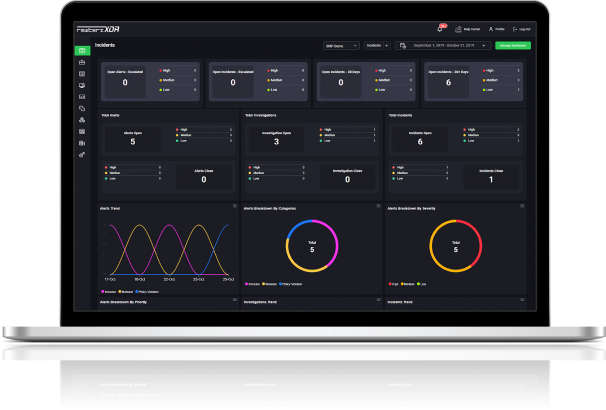

Multiple Microsoft Windows Products Vulnerabilities
July 21, 2025
CVE-2025-23270 – NVIDIA Jetson Linux Vulnerability
July 21, 2025
Multiple Microsoft Windows Products Vulnerabilities
July 21, 2025
CVE-2025-23270 – NVIDIA Jetson Linux Vulnerability
July 21, 2025Severity
High
Analysis Summary
The Mirai botnet is a type of malware that infects Internet of Things (IoT) devices, such as routers, security cameras, and other smart devices, to launch distributed denial-of-service (DDoS) attacks. The botnet was first discovered in August 2016 and quickly gained notoriety for its ability to launch some of the largest DDoS attacks ever recorded, including an attack that took down the DNS provider Dyn.
Mirai works by scanning the internet for devices that use default or easily guessable passwords, such as "admin" or "password". Once a vulnerable device is identified, the malware infects it and adds it to the botnet, which can then be used to launch DDoS attacks on a target.
Mirai is particularly effective because it can exploit the large number of poorly secured IoT devices that are connected to the internet. This makes it difficult to defend against, as many of these devices have limited processing power and memory, and may not receive regular security updates.
Since its discovery, Mirai has continued to evolve and new variants of the malware have been detected. The best defense against Mirai is to ensure that IoT devices are properly secured, with strong passwords and regular security updates. Network administrators can also use tools to monitor for unusual traffic patterns that may indicate a DDoS attack is underway.
Impact
- Server Outage
- Data Loss
- Website Downtime
Indicators of Compromise
MD5
27517a4dfa78d27d9c290a92b71b2ae6
8eba74fe5b904b0af7450c6f37ae1be8
57f0b5d1f9a5d6b0bc9ad65899143268
99a65d5c79199aa4efaf8ad0a7d86f3a
5af07ad674a307b2c596c378837b9461
SHA-256
b3e49179db2a57c9c7a8241d93ecae96f5f693819bfbb74250d9651713a1c3f0
581a8880842952d7d9142e83197d3702adb709847aa9e9510790db9ee15bb398
92065758b6dd7c0cdbfff5c375408f690bb22090001784f3e93b4bd701ff47ec
709943192148b0576af766ab4221cc88d15b1a38c43ed41aafa253440fe920f0
72c5410c4433330bf0204509e69c6a4d8af34e715f57ddfebe01f788f0bbefdb
SHA1
766ce1eda715f4304a4e3a20487ba9cab99d3a5a
e733fe6e702f3688666227282338a799d99309a5
4515a5b8dcdde14d8157ed003e491f10647abd9c
91d2add80dc9b2483cfa595cc1cdeea1bc7dc490
2215bc07920e3df4861bca01f0f8b66bea46860e
Remediation
- Block all threat indicators at your respective controls.
- Search for indicators of compromise (IOCs) in your environment utilizing your respective security controls.
- Never trust or open links and attachments received from unknown sources/senders.
- Upgrade your operating system.
- Enable antivirus and anti-malware software and update signature definitions on time. Using multi-layered protection is necessary to secure vulnerable assets.
- Immediately change default passwords on IoT devices to unique ones.
- Keep devices' firmware and software up to date to ensure that known vulnerabilities are patched.
- Implement firewalls and intrusion detection systems to monitor and control traffic to and from IoT devices.
- Employ tools that can identify unusual behavior or traffic patterns that might indicate a DDoS attack or a compromised device.
- Disable any unnecessary services or features on IoT devices to reduce their attack surface.
- Follow security best practices, such as disabling remote management if not needed and enabling security features provided by the device manufacturer.
- Deploy intrusion detection and prevention systems (IDS/IPS) to monitor for anomalous or malicious network activity.
- Set up alerts for unusual traffic patterns that might indicate a DDoS attack or a compromised device.








